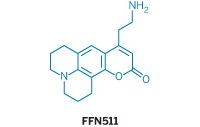Advertisement
Grab your lab coat. Let's get started
Welcome!
Welcome!
Create an account below to get 6 C&EN articles per month, receive newsletters and more - all free.
It seems this is your first time logging in online. Please enter the following information to continue.
As an ACS member you automatically get access to this site. All we need is few more details to create your reading experience.
Not you? Sign in with a different account.
Not you? Sign in with a different account.
ERROR 1
ERROR 1
ERROR 2
ERROR 2
ERROR 2
ERROR 2
ERROR 2
Password and Confirm password must match.
If you have an ACS member number, please enter it here so we can link this account to your membership. (optional)
ERROR 2
ACS values your privacy. By submitting your information, you are gaining access to C&EN and subscribing to our weekly newsletter. We use the information you provide to make your reading experience better, and we will never sell your data to third party members.
Biological Chemistry
Questions Arise Over Interaction Between Brain Cells
Neuroscience: Latest findings contradict hypothesis that calcium signaling enables glial cells to influence synaptic activity
by Sophie L. Rovner
March 5, 2010

Glial cells provide structural and nutritional support to neurons in the brain. Many neuroscientists believe that glial cells also influence neuronal function at synapses through calcium-dependent release of chemical messengers known as gliotransmitters, thereby affecting learning and memory. Several studies bolster this contention, but research just published in Science calls it into question (2010, 327, 1250).
Regardless of which hypothesis proves correct, researchers agree that neurons and glial cells have a working relationship. Presynaptic neurons release neurotransmitters that bind not only to receptors on postsynaptic neurons but also to receptors on adjacent astrocytes, a type of glial cell. This binding liberates calcium stored in the astrocytes' endoplasmic reticulum, explains Frank Kirchhoff, a neuroscientist at Max Planck Institute of Experimental Medicine, in Göttingen, Germany, in an accompanying commentary (Science 2010, 327, 1212).
Prior studies have suggested that the freed calcium stimulates astrocytes to release serine, glutamate, and adenosine triphosphate, which serve as gliotransmitters that affect synaptic activity. These studies relied on pharmacological approaches, such as bathing astrocytes in compounds that activate their calcium receptors, to manipulate calcium levels in the cells.
"Although this scenario may well explain how astrocytes directly affect neuron function, concerns have been raised as to whether such 'gliotransmission' is merely an experimental artifact," Kirchhoff writes.
For this reason, research associate Cendra Agulhon and pharmacology professor Ken D. McCarthy at the University of North Carolina, Chapel Hill, used new experimental methods for the latest study.
The researchers developed two lines of genetically modified mice in which receptor-mediated calcium release was either prevented or could be stimulated on command in astrocytes. Electrical activity assays and fluorescent imaging of brain slices from the genetically modified mice showed these changes had no effect on synaptic activity or plasticity.
The data indicate that calcium signaling is not sufficient to trigger gliotransmission by astrocytes, Agulhon says, "so we have to reconsider what has been claimed so far about the role of astrocyte calcium excitability in synaptic activity and plasticity." But she adds that "even though our data show that astrocyte calcium signaling is not involved in release of gliotransmitters, astrocytes are still partners of neurons for many other physiological functions."
Agulhon acknowledges that the new findings will be controversial, so she next plans to use two-photon imaging to study interactions between astrocytes and neurons following sensory stimulation in living animals.




Join the conversation
Contact the reporter
Submit a Letter to the Editor for publication
Engage with us on Twitter